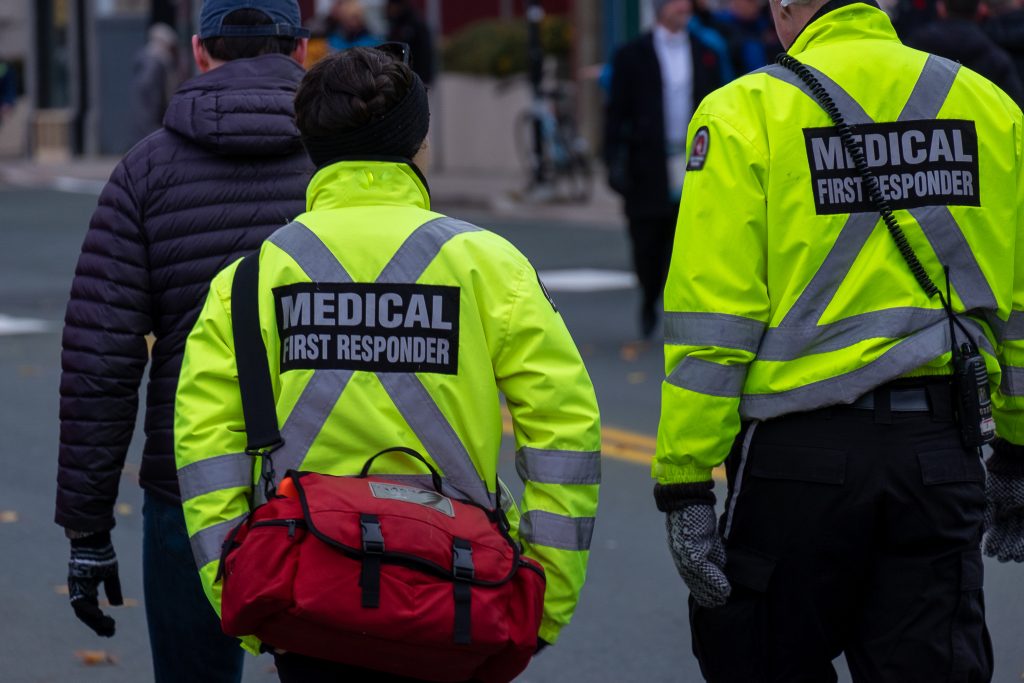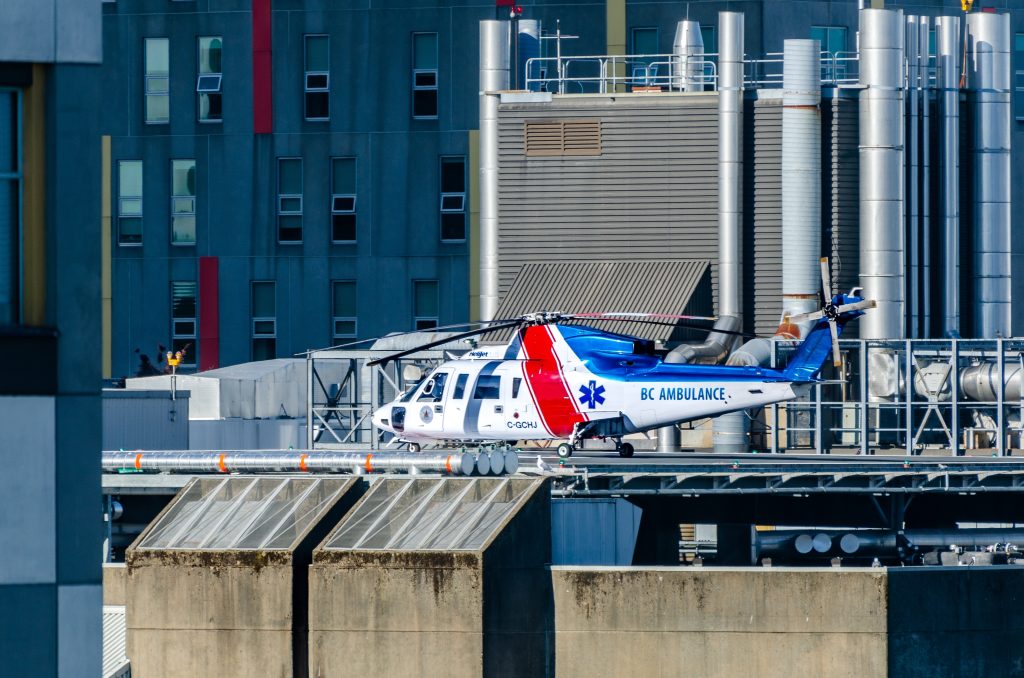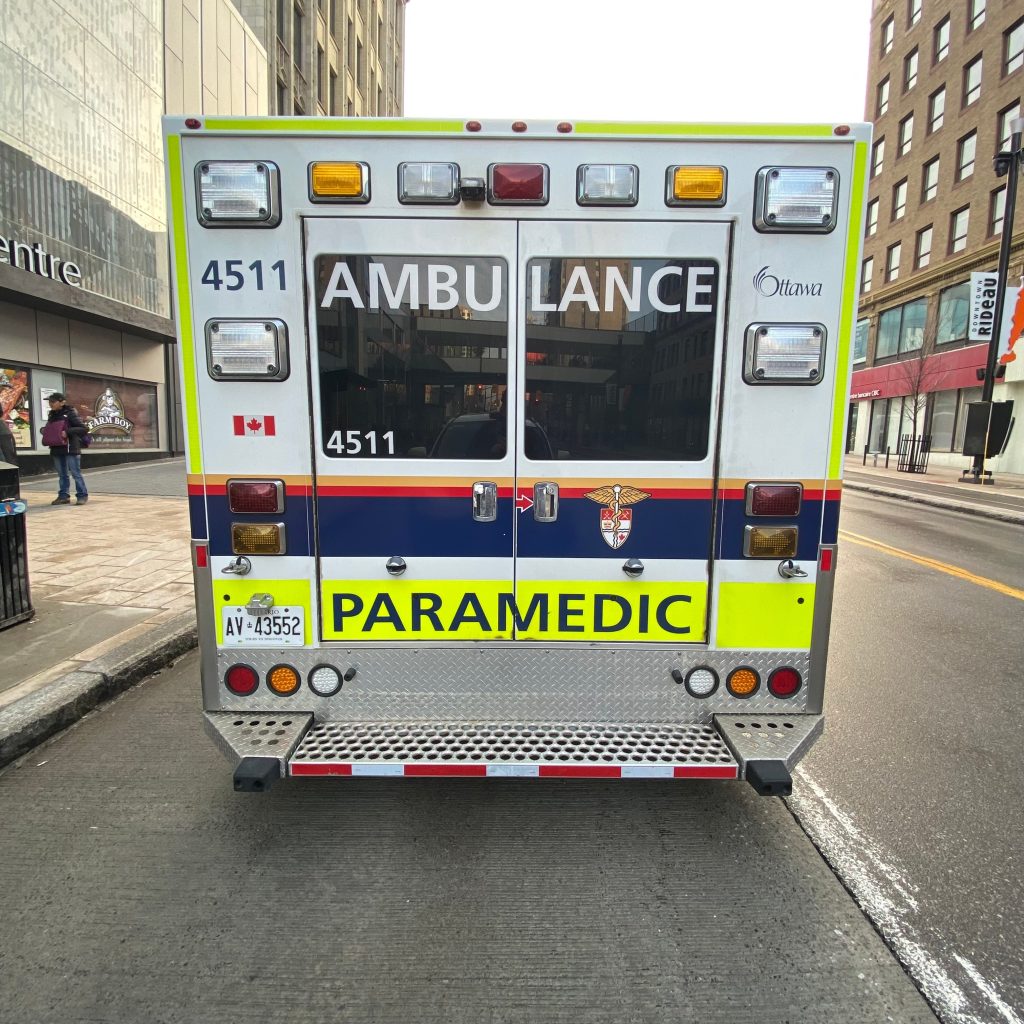Introduction
Community Paramedicine is an emerging field that uses paramedics outside of their traditional roles of emergency response and transportation, applying their skills to provide more preventive and proactive services, sometimes in a home setting. This field has received interest for its potential to reduce ambulance calls, emergency department visits, address health service gaps in remote and rural areas, and serve vulnerable populations. Given the fact that many First Nations live in remote, rural, or isolated locations and face higher rates of chronic conditions, Community Paramedicine programs could be very useful in improving First Nations health care.
Origins of Community Paramedicine

Community paramedicine developed in the context of growing and aging populations and shortages of healthcare workers in Canada, Australia, the United States, and the United Kingdom. Innovations in medical technology in the 1990s, such as telemedicine, better monitoring devices, and point-of-care testing, allowed for more accurate diagnosis on-site and away from medical centres by paramedics.
The first Community Paramedicine program in Canada was launched in Nova Scotia for the isolated Long and Brier Islands communities in 2001. Four years later, in 2005, a meeting was held in Halifax with participants from Australia, Canada, the United States, and Scotland, to discuss the parameters of Community Paramedicine. This resulted in annual meetings of the International Roundtable on Community Paramedicine, alternately held in Canada, the US, Australia, or the UK.
Models of Community Paramedicine
An international team of experts reviewed Community Paramedicine programs in the US, the UK, Oceania, Finland, Ireland, and Canada. They identified several models of service delivery for these programs. Notably, some programs use more than one of these models.
- Community Assessment and Referral: Community paramedics connect people with other care providers.
- Community Paramedic-Led Clinics: Community paramedics engage in health promotion and inform community members of preventive care services including chronic disease education, blood pressure checks, and influenza vaccines.
- Home Visit Programs: Community paramedics work with other health care service providers to maximize at-home services for those who frequently call or are at risk of frequently calling 911 due to medical conditions or unmet social needs.
- Remote Patient Monitoring Programs: Community paramedics work with providers of primary care services to proactively address issues through 24-hour home-based monitoring programs for those suffering from chronic conditions.
- Community Paramedic Specialist Response: Community paramedics closely work with 911 colleagues in a coordinated and collaborative fashion to facilitate access to other health care providers.
- Hospital Discharge/Transitional Care Support:Community paramedic programs partner with health facilities to improve the timeliness of discharge from the hospital. Community paramedics provide follow up.
- Mental Health and Addictions Support: Community paramedics are included in mental health crisis response teams. They provide care through homeless shelter programs and aid in medical care and oversight at safe consumption and treatment sites.
- Palliative Care Support:Community paramedics provide care for palliative patients at home, in accordance with the preferences of those receiving care.
- Influenza Surge Programs: Community paramedics work with at-risk groups to raise vaccination rates and manage flu-like symptoms in retirement, nursing, and other residential care settings.
- COVID-19 Response Programs: Initiatives that emerged during the COVID-19 pandemic. Community paramedics provided COVID-19 response actions, including testing, vaccine clinics, as well as logistical support to public health partners.
Case Study: British Columbia Community Paramedicine Program
A recent Community Paramedicine program is the British Columbia (BC) Community Paramedicine Program. This program emerged in BC through collaboration between the provincial Health Ministry, regional health authorities, BC Emergency Health Services, the Ambulance Paramedics of BC, and other sector partners. The program aims to bridge health service delivery gaps working with local health care teams for rural and remote communities that are often underserved and can have aging populations living with chronic conditions.

The BC Community Paramedicine Program is notable for being the first in Canada launched on a province-wide basis. Implemented in phases, by its final stage it was operating in 99 communities. These include remote communities in the Northern, Interior, Vancouver Island, Vancouver Coastal, and Fraser Health Authorities including surrounding regions and nearby First Nations communities.
An evaluation of the program found that it was successful at attracting and retaining paramedics to work in rural and remote communities. Community paramedics were found to be bridging gaps at the local level and not duplicating existing services. Instead, they were making existing services more effective. Furthermore, 52% of patients cared for by community paramedics reported improved or maintained health.
Objectives of Community Paramedicine Programs and Documented Benefits
Community Paramedicine developed as a collaborative approach to use highly-skilled and mobile paramedics to bridge gaps between other service providers and patients. Community Paramedicine programs aim to improve quality of life for patients, reduce future ambulance calls, and decrease visits to emergency departments. There is evidence that these programs are achieving their objectives.
- Fewer Emergency Department Visits: Studies have compared those receiving Community Paramedicine care to a control group. A reduction in emergency department visits between 21% and 58.7% is found.
- Fewer Emergency Medical Services (EMS) Calls: Community Paramedicine programs housed in EMS resulted in a 26% reduction in EMS calls. The Ontario Community Paramedicine Remote Patient Monitoring (CPRPM) Program reduced 911 calls by older patients with chronic conditions by 26%.
- Fewer Hospital Admissions: Literature reports a decrease in hospital admissions, 30-day readmission rates, and better quality of life with Community Paramedicine programs. The CPRPM reduced hospital admissions for older patients with chronic conditions by 32%. The Renfrew County Home Visit Program in Ontario reduced hospital admissions by 55%.
- Better Patient Outcomes: Community Paramedicine programs are linked with improved self-reported patient outcomes. Other studies demonstrate that systolic and diastolic blood pressure in patients with hypertension decrease significantly with community paramedic intervention. A 2017 Canadian study associated community paramedicine intervention with a diabetes risk reduction in 15% of participants.
- Savings: An evaluation of the CPRPM Program by Queen’s University estimated the program cost $1,134 per patient to implement and saved $7,279 per patient through preventing other costs, such as hospital admissions and emergency department visits. This works out to net savings of $6,145 per patient.
Applications to First Nations

Many First Nations face challenges that Community Paramedicine programs are designed to address. These include remoteness, lack of access to primary healthcare services, and a reliance on emergency medical transportation. Community Paramedics do serve First Nations communities in various parts of the province in BC, and have been used to provide assistance to vulnerable Indigenous populations in Winnipeg during the COVID-19 Pandemic.
To successfully implement Community Paramedicine programs on-reserve, many factors will have to be considered and addressed. This includes government funders structuring fiscal support in such a way that preventive and proactive care is encouraged. It also includes addressing the long-standing challenges of recruitment and retention in remote and northern First Nations. As well, being aware of and addressing the role of systemic racism in health care is essential.
Final Thoughts
Community Paramedicine is reshaping how health care is delivered in Canada, particularly for rural, remote, and Indigenous communities. By leveraging the skills of paramedics outside of traditional emergency roles, these programs reduce hospital visits, improve patient outcomes, and bridge critical gaps in care. As the field continues to grow, it offers a sustainable and collaborative model that supports aging populations, addresses chronic conditions, and strengthens community-based health systems. With proper funding, cultural awareness, and long-term commitment, Community Paramedicine has the potential to become a cornerstone of equitable and accessible health care across Canada.










Share the article